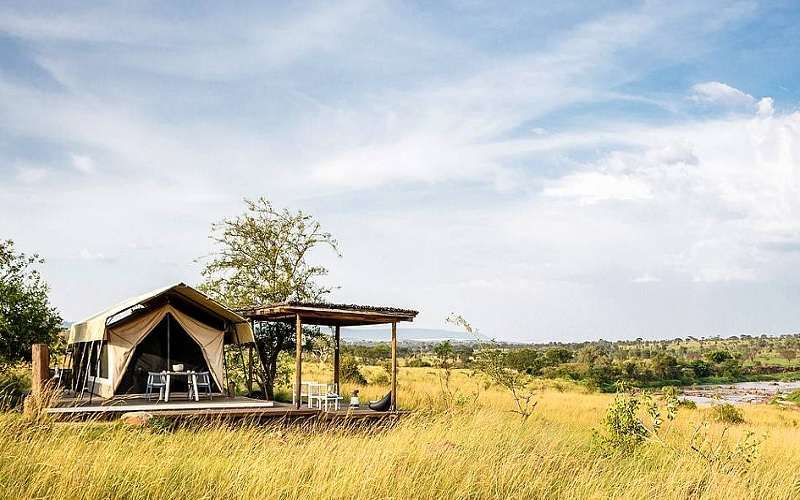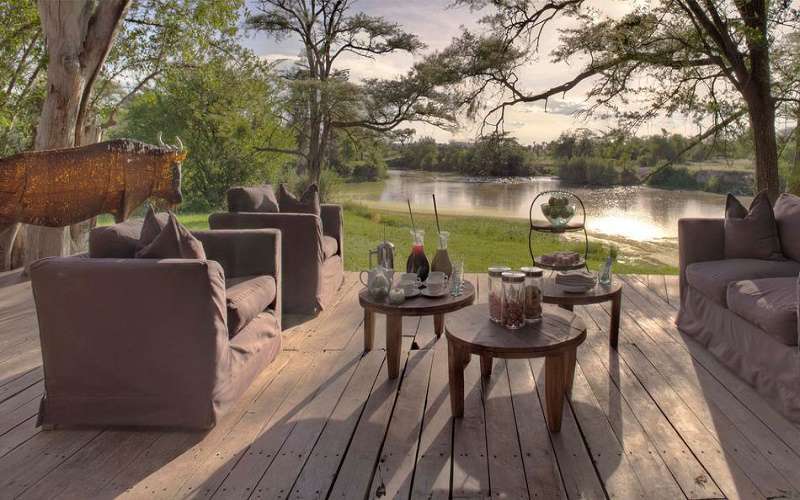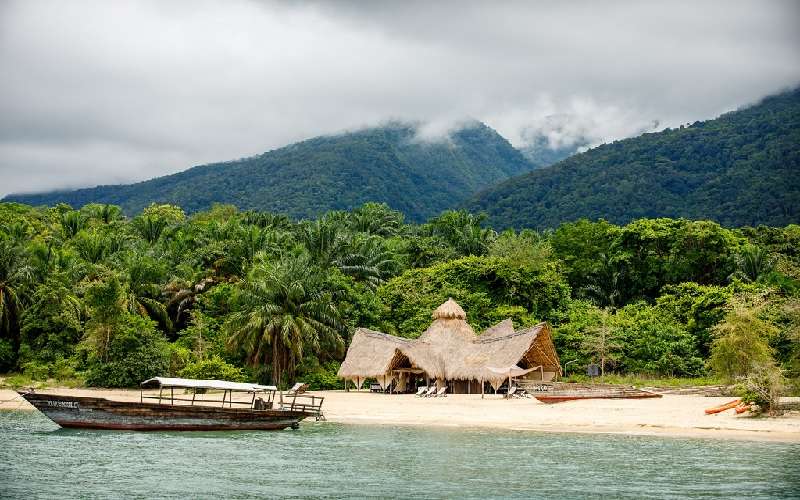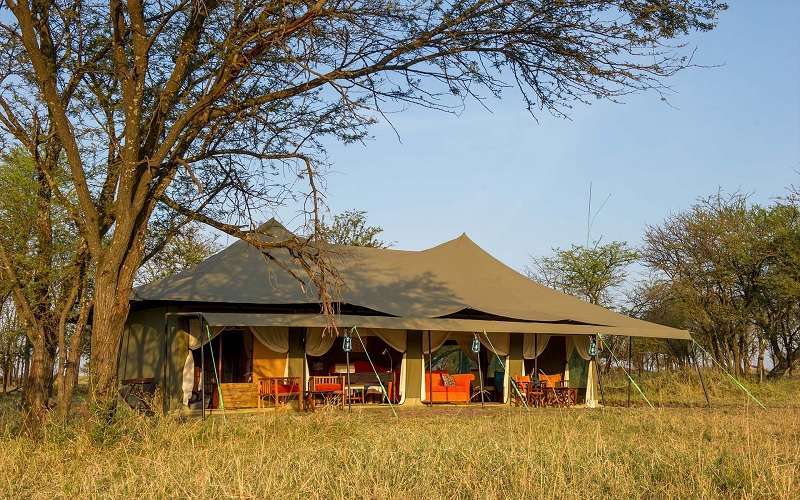The country of Tanzania Safaris and lodges is home to a treasure trove wildlife and vast, diverse habitats of untamed and untouched Africa. Tanzania is home to the Crown Jewels of Africa Safari regarding habitat and wildlife Diversity. We see the country as more of a Safari destination than a beach destination. It is one of the last places on earth where you can go on a safari and see African the way was wild and peaceful. The United Republic of Tanzania in Africa is in central East Africa, and it is a member of the commonwealth. It has well run a stable government, and at present, it is the poster child of good governance in Africa. The country is safe to travel in, and Tanzania is warm friendly and welcoming.
Tanzania is bordered by Republics of Kenya & Uganda to the north, Rwanda, Burundi and the Democratic Republic of the Congo to the west. Zambia, Malawi and Mozambique border Tanzania to the south. Tanzania's sea-facing eastern borders are on the Indian Ocean. Tanzania is a unitary republic composed of 27 regions. Since 1995, the official capital of Tanzania has been Dodoma, where parliament and some government offices are located. Between independence and 1995, the primary coastal city of Dar es Salaam had been Tanzania's political capital. Today, Dar es Salaam remains the seat of most government institutions. It is the principal seaport in Tanzania and its landlocked neighbours.
The name Tanzania is a combination of the two words Tanganyika and Zanzibar. The two states united in 1963 to form the United Republic of Tanganyika and Zanzibar, which later the same year was renamed to be Tanzania. Tanzania is divided into 26 regions, called koa, of which twenty-one are on the mainland and five on Zanzibar Island. Ninety-nine districts, referred to as Wilaya, had been created to increase local authority further. At present, 114 councils are operating in 99 districts in Tanzania: 22 are urban, and 92 are rural. The 22 urban areas are also classified as:
- Municipalities: Dar es Salaam and Mwanza
- Municipal councils: Arusha, Dodoma, Iringa, Kilimanjaro, Mbeya, Morogoro, Shinyanga, Tabora, and Tanga
- Town councils:L the remaining eleven communities
Tanzania is subdivided into the following regions:
- Arusha
- Dar es Salaam
- Dodoma
- Iringa
- Kagera
- Kigoma
- Kilimanjaro
- Lindi, Manyara
- Mara
- Mbeya
- Morogoro
- Mtwara
- Mwanza
- Pemba North
- Pemba South
- Pwani
- Rukwa
- Ruvuma
- Shinyanga
- Singida
- Tabora
- Tanga
- Zanzibar Central & South
- Zanzibar North and Zanzibar Urban & West.
Geography of Tanzania
With a size of about 947,305 km², Tanzania is the world's 31st-largest country; it is comparable in size to Nigeria. Tanzania has mountain ranges in North the result volcanic and tectonic movement in the northeast, where Mount Kilimanjaro, Africa's highest peak, is located. To the north-west are the Great Lakes of Rift Valley, Lake Victoria and Lake Tanganyika. Lake Victoria is the largest lake in Africa, and Lake Tanganyika is Africa's deepest lake known for its unique species of fish. The central part of Tanzania consists of a vast plateau, with plains and arable land. The eastern shore of Tanzania is characterised by hot and humid weather, with the tropical island of Zanzibar lying just offshore.
Game Reserve and National Parks in Tanzania
Tanzania is home to large & ecologically significant wildlife parks such as the Ngorongoro Crater, the magnificent Serengeti Park in the North and the Selous Reserve and Mikumi Park in the South. The Gombe National Park in Tanzania is known as the site of Dr Jane Goodall's studies of chimpanzee behaviour.
The Kalambo water falls in south-west Tanzania's territory of Rukwa are one of Tanzania's many tourist destinations. The Kalambo Waterfalls are the second highest on the Africa Continent, and they are located on southern tip of Lake Tanganyika. The climate of Tanzania Tanzania has a tropical climate. In the highlands, temperatures range between 10 and 20 °C. The other parts of Tanzania show temperatures rarely falling lower than 20 °C. The hottest months are from November to February where temperatures range between 25–31 °C while the coldest period is from May to August (15–20 °C ). The annual temperature in Tanzania is 32-degree Celsius. The climate is cold in high mountainous regions.
Tanzania has two significant rainfall areas. In the southern, south-west, central and western parts of Tanzania, it rains from December to April. In the north and northern coast of Tanzania rain is expected from October -December and March-May.
- Tanzania is in central East Africa
- Dar es Salaam is commercial and central port city of Tanzania
- The name Tanzania is a combination of the two words Tanganyika and Zanzibar
- With a size of about 947,300 km², Tanzania is the world's 31st-largest country
- Tanzania is home to sandy beaches and many game reserves & nature reserves
- Lake Victoria is the most significant lake in Africa
- Lake Tanganyika in Tanzania is Africa's deepest lake known for its unique species of fish
- Ngorongoro Crater
- The magnificent Serengeti National Park is in the north of Tanzania
- The Selous Game Reserve and the Mikumi National Park are in Tanzania's southern region
- The Gombe National Park in Tanzania is known as the site of Dr Jane Goodall's studies of chimpanzee behaviour
- The great Kalambo Falls in Tanzania is the second largest waterfalls in Africa
- Game lodges, safari, tented camps, hotels and beach resorts ranging from standard to most luxurious await travellers




.jpg)


.jpg)







.jpg)
.jpg)
.jpg)
.jpg)
.jpg)
.jpg)


.jpg)
.jpg)
.jpg)





.jpg)




